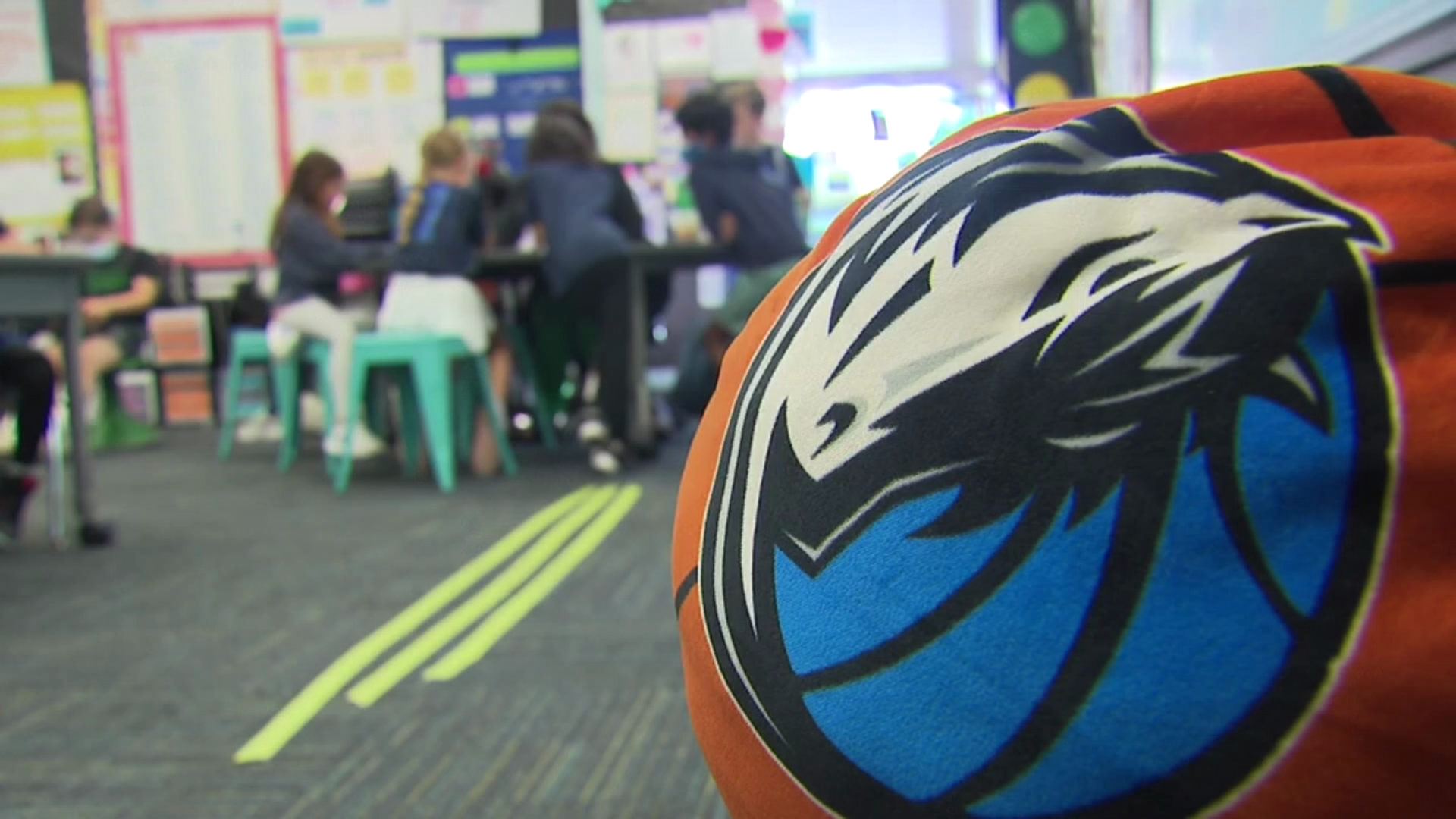There's been a chlorine-like smell flowing from faucets in several North Texas cities. It's been raising concerns over the last couple of weeks, but it was a Facebook post from advocate Erin Brockovich warning people that the water was dangerous that really started the pandemonium.
"I immediately thought of all of the homemade baby food I've made, and my little guy likes to take a bath, and he'll drink the water as he's bathing, and I'm horrified thinking about what's gone into his body that can't be undone," said Rebecca Clinard.
Clinard and her sister, Rachel Barfield, say they've questioned the safety of the water in their Rockwall homes for years.
Barfield uses a filtration system for drinking water, but it doesn't do anything for the water she uses for other household tasks. Barfield is now convinced the water is the cause of the rashes she and her children get each time they bathe.
"I'm worried about what else it could be doing besides just surface stuff, besides the rashes and the hives. What is it doing to the inside of me and my children and my husband?" Barfield said.
That is why she says she felt vindicated when she found the Facebook post from Brockovich.
The well-known advocate pointed to the ammonia and chlorine mixture, known as chloramine, used by the water district to remove dangerous bacteria and byproducts.
Local
The latest news from around North Texas.
"Good people of North Texas... this is a cheap dirty trick and a really bad idea. It does not reduce the DIRT in the drinking water... it masks or covers up the ability for chlorine to react with the remaining DIRT and form 'regulated' disinfection byproducts. Sadly... they only care about 'regulated' toxins. Chloramine actually forms toxins 1,000 time more dangerous... they are just not yet 'regulated.' They know this and frankly just don't care.
"So... the ammonia (which is nitrogen) is pumped into your drinking water... it is not 'Safe'... it is a weaker disinfectant... which allows (actually feeds) bacteria and biofilms in the pipes, plumbing systems and appliances. This biofilm exhausts the chlorine freeing up the ammonia (nitrification) which is like candy to bacteria and your system begins to fail. After this failure... the free chlorine burnout becomes necessary. Again... it is not 'Safe' it is toxic and dangerous. Just where do you think the broken down biofilm ends up? Yuck!"
Mike Rickman, deputy director of operations and maintenance for the North Texas Municipal Water District, called her allegations false, saying she was missing a big piece of the puzzle.
He says the district recently adopted ozone treatment, which removes most of the byproducts before it's treated by chloramine.
He also denied Brockovich's claims that chloramine isn't safe, adding that it's used by 45 percent of water systems across the United States.
"Our water is absolutely safe to drink and use and meets all state and federal regulatory requirements. We do not cut any corners. What we're doing right now is simply to help control and continue to produce that high quality water," Rickman said.
Part of Brockovich's claim referenced a process called "burnout," which happens every year at this time when the water district switches from chloramine to free chlorine to help flush the lines. Both Rickman and the Texas Commission on Environmental Quality call it a common practice.
The NTMWD says it's this routine maintenance that can cause a strong chlorinated taste and smell. They expect it to end on March 26.
The NTMWD serves the following member cities: Allen, Farmersville, Forney, Frisco, Garland, McKinney, Mesquite, Plano, Princeton, Richardson, Rockwall, Royse City and Wylie.
Additionally, the NTMWD lists the following towns as customers: Ables Springs Special Utility District, College Mound Special Utility District, BHP Water Supply Corporation, Copeville Special Utility District, Bear Creek Special Utility District, East Fork Special Utility District, Caddo Basin Special Utility District, Forney Lake Water Supply Corporation, Cash Special Utility District, Gastonia-Scurry Special Utility District, City of Bonham , Greater Texoma Utility Authority, City of Crandall, Milligan Water Supply Corporation, City of Fate, Mount Zion Water Supply Corporation, City of Josephine, Nevada Special Utility District, City of Kaufman, North Collin Water Supply Corporation, City of Lucas, Rose Hill Special Utility District, City of Melissa, Seis Lagos Utility District, City of Murphy, Town of Fairview, City of Parker, Town of Little Elm, City of Rowlett, Town of Prosper, City of Sachse, Town of Sunnyvale, City of Terrell, Wylie Northeast Special Utility District.
Some NTMWD customers contract with other cities to provide them with water service. Though those cities are not served by the NTMWD directly, they are receiving water from the NTMWD through a contract with a NTMWD customer. Those cities and customers receiving NTMWD water are: Air Park Estates, Altoga Water Supply Corporation, Beach and Tennis Club HOA, Becker Jiba Water Supply Corporation, BHP Water Supply Corporation, Bois d’Arc Municipal Utility District, Caddo Basin Special Utility District, City of Caddo Mills, City of Honey Grove, City of Lone Oak, City of Quinlan, City of The Colony, City of Van Alstyne, City of West Tawakoni, City of Windom, Combined Consumers Special Utility District, Country Wood Estates, Culleoka Water Supply Corporation, Elmo Water Supply Corporation, High Point Water Supply Corporation, Jacobia Water Supply Corporation, Kaufman County FWSD 1A, Kaufman County Municipal Utility District 11, Kaufman County Municipal Utility District 12, Kaufman County Municipal Utility District 14, Lawrence Water Supply Corporation, Markout Water Supply Corporation, Nevada Water Supply Corporation, Shady Grove Water Supply Corporation, Southeast Kaufman Water Supply Corporation, Talty Special Utility District.



